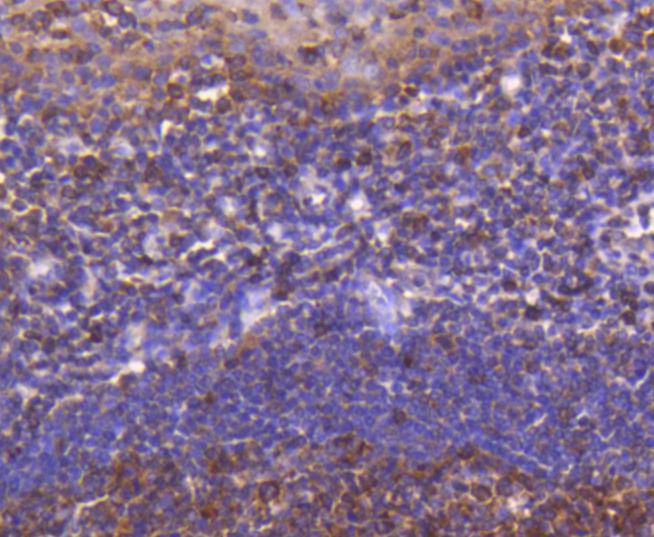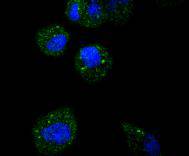Product Detail
Product NameATF5 Rabbit mAb
Clone No.SD2099
Host SpeciesRecombinant Rabbit
Clonality Monoclonal
PurificationProA affinity purified
ApplicationsWB, ICC/IF, IHC, IP
Species ReactivityHu, Ms, Rt
Immunogen Descrecombinant protein
ConjugateUnconjugated
Other NamesActivating transcription factor 5 alpha/beta antibody Activating transcription factor 5 antibody Activating transcription factor X antibody AFTA antibody ATF 5 antibody ATF 7 antibody ATF7 antibody ATFX antibody BZIP protein ATF7 antibody cAMP dependent transcription factor ATF 5 antibody cAMP dependent transcription factor ATF5 antibody Cyclic AMP dependent transcription factor ATF 5 antibody Cyclic AMP dependent transcription factor ATF5 antibody FLJ34666 antibody HMFN0395 antibody MGC102397 antibody NAP1 antibody NRIF3 associated protein antibody ODA 10 antibody Transcription factor ATFx antibody Transcription factor like protein ODA 10 antibody Transcription factor like protein ODA10 antibody
Accession NoSwiss-Prot#:Q9Y2D1
Uniprot
Q9Y2D1
Gene ID
22809;
Calculated MW31 kDa
Formulation1*TBS (pH7.4), 1%BSA, 40%Glycerol. Preservative: 0.05% Sodium Azide.
StorageStore at -20˚C
Application Details
WB: 1:1,000-1:2,000
IHC: 1:50-1:200
ICC: 1:50-1:200
Western blot analysis of ATF5 on different lysates using anti-ATF5 antibody at 1/1,000 dilution. Positive control: Lane 1: Jurkat Lane 2: PC-12
Immunohistochemical analysis of paraffin-embedded human tonsil tissue using anti-ATF5 antibody. Counter stained with hematoxylin.
Immunohistochemical analysis of paraffin-embedded human liver cancer tissue using anti-ATF5 antibody. Counter stained with hematoxylin.
Immunohistochemical analysis of paraffin-embedded mouse stomach tissue using anti-ATF5 antibody. Counter stained with hematoxylin.
Immunohistochemical analysis of paraffin-embedded mouse heart tissue using anti-ATF5 antibody. Counter stained with hematoxylin.
ICC staining ATF5 in Hela cells (green). The nuclear counter stain is DAPI (blue). Cells were fixed in paraformaldehyde, permeabilised with 0.25% Triton X100/PBS.
ICC staining ATF5 in PC-12 cells (green). The nuclear counter stain is DAPI (blue). Cells were fixed in paraformaldehyde, permeabilised with 0.25% Triton X100/PBS.
Eukaryotic gene transcription is regulated by sequence-specific transcription factors that bind modular cis acting promoter and enhancer elements. The ATF/CREB transcription factor family binds the palindromic cAMP response element (CRE) octanucleotide TGACGTCA. The best characterized members of this gene family include CREB-1, CREB-2 (also designated ATF-4), CRE-BPa, LZIP (also designated CREB3 and Luman), CREM-1, CREM-2, ATF-1, ATF-2, ATF-3, ATF-5, ATF-6 and ATF-7. This family of proteins contain highly divergent N-terminal domains, but share a C-terminal leucine zipper for dimerization and DNA binding. ATF-5 (ATFx), which can localize to the cytoplasm or the nucleus, binds DNA as a dimer. It interacts with CCND3 and PTP4A1.
If you have published an article using product 49148, please notify us so that we can cite your literature.









 Yes
Yes



